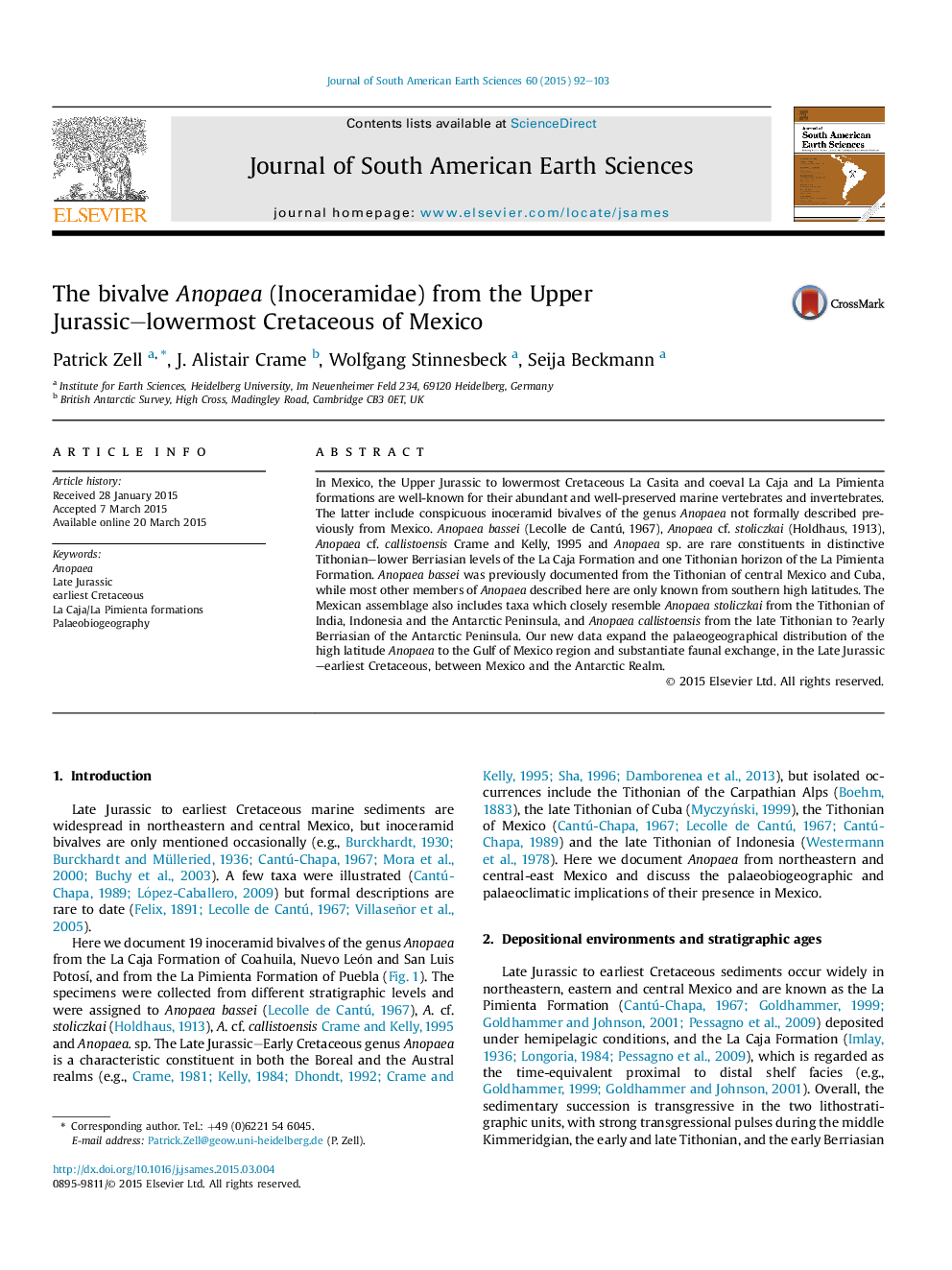| Article ID | Journal | Published Year | Pages | File Type |
|---|---|---|---|---|
| 4682058 | Journal of South American Earth Sciences | 2015 | 12 Pages |
•We provide data about stratigraphy and palaeogeography of the bivalve Anopaea (Inoceramidae) from the uppermost Jurassic–lowermost Cretaceous of northeastern and central-east Mexico.•We identified four species.•Two species indicate a faunal connection between the ancient Gulf of Mexico and the southern high latitudes.
In Mexico, the Upper Jurassic to lowermost Cretaceous La Casita and coeval La Caja and La Pimienta formations are well-known for their abundant and well-preserved marine vertebrates and invertebrates. The latter include conspicuous inoceramid bivalves of the genus Anopaea not formally described previously from Mexico. Anopaea bassei (Lecolle de Cantú, 1967), Anopaea cf. stoliczkai (Holdhaus, 1913), Anopaea cf. callistoensis Crame and Kelly, 1995 and Anopaea sp. are rare constituents in distinctive Tithonian–lower Berriasian levels of the La Caja Formation and one Tithonian horizon of the La Pimienta Formation. Anopaea bassei was previously documented from the Tithonian of central Mexico and Cuba, while most other members of Anopaea described here are only known from southern high latitudes. The Mexican assemblage also includes taxa which closely resemble Anopaea stoliczkai from the Tithonian of India, Indonesia and the Antarctic Peninsula, and Anopaea callistoensis from the late Tithonian to ?early Berriasian of the Antarctic Peninsula. Our new data expand the palaeogeographical distribution of the high latitude Anopaea to the Gulf of Mexico region and substantiate faunal exchange, in the Late Jurassic–earliest Cretaceous, between Mexico and the Antarctic Realm.
